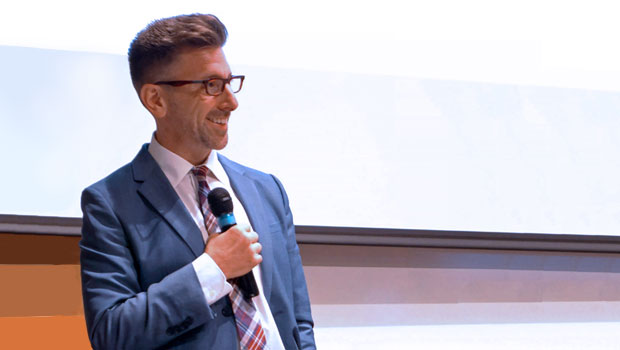“Once the storm is over, you won’t remember how you made it through, how you managed to survive. You won’t even be sure whether the storm is really over. But one thing is certain. When you come out of the storm, you won’t be the same person who walked in.”
Quoting from the Japanese writer Haruki Murakami, Dr. Marc Brackett—founder and director of the Yale Center for Emotional Intelligence—acknowledged that the last 18 months for educators and children have been challenging. Like survivors of a storm, teachers and students are, in many ways, changed.
Brackett has been leading discussions with educators as part of a CEA virtual series called Mindful Mondays. It includes live webinars and on-demand videos on a variety of topics to help teachers cope, thrive, and improve their lives—as well as those of their students—inside and outside the classroom. The series, which kicked off September 13, will run through early November.
How are you doing?
In polls taken at the height of the pandemic, teachers and students were asked to identify their feelings. Feelings that first came to educators’ minds were “anxious” (followed closely by “overwhelmed,” “stressed,” and “tired”). For children, “frustrated” was number one. Anyone who made the switch from in-person to remote to hybrid learning over those 16 or more months could relate, with challenges ranging from illness to social isolation to failures in technology.
This summer, Brackett noted, teachers were asked how they would like to feel going into the new school year, and their top responses were excited, safe, confident, and happy.
As the school year got underway, however, what teachers wanted to feel most—amid debates about everything from vaccines to masks to curriculum—was simply appreciated.

Missed any of CEA’s Mindful Mondays? There’s still time to register for live sessions and catch up on previous ones at cea.org/mindful-mondays.
“It feels a little cliché,” said Brackett, “but there’s a lot of research around gratitude, and it really works. If you put it out there—for example, if you show appreciation and start an appreciation revolution, then it will come back to you. Sometimes you have to be the first. Sometimes you have to start it.”
He also noted that to be emotionally healthy, we must give ourselves permission to feel. For teachers—who must often appear chipper and happy, especially when working with children in the lower elementary grades—that can be a challenge.
“Kindergarten teachers are always told how much fun their job must be,” says Brackett. “But by the end of the day, that emotional labor can be really draining.”
The first steps toward regulating our emotions, he says, is identifying them and allowing ourselves to feel those emotions. Learning to do that is key for teachers not only for their own emotional health but as a way of guiding their students toward healthy emotional lives.
“Many of you know I come from a background of bullying and abuse, and my uncle—who was a teacher—gave me permission to feel,” Brackett recalls. Characteristics of people such as his uncle are common to teachers, he adds. “You are empathic, compassionate, nonjudgmental, supportive, validating, caring, and patient.”
Learn more about managing emotions, maximizing your time, reducing and coping with stress, and modeling these skills and behaviors for students. Visit cea.org/mindful-mondays.







